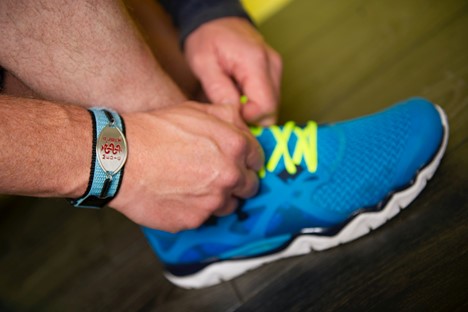Using a medical alert system, you can be monitored both inside and outside the home as it makes sure the safety of those who are most vulnerable. Emergency personnel is notified when a medical alert system is triggered – usually by a medical emergency.
A medic alert jewelry system also works as a medical id tag. Patients with chronic diseases, life-threatening allergies, those taking certain medications, and anyone who needs special emergency care often wear medic alert bracelets and necklaces. Even though they don’t have an alarm system to signal emergency responders, they can alert them to the type of care required.
Medical Alert Bracelets: Who Needs Them?
If you are incapacitated or ill, you should wear a medical ID with epilepsy, diabetes, dementia, heart conditions, asthma, ADHD/ADD, and autism. A medical alert bracelet may be necessary for conditions not listed here. It would help if you discussed your health concerns with your doctor.
Not wearing a medical ID if you have a chronic illness can delay appropriate treatment, cause misdiagnosis of symptoms, increased severity of minor emergencies, and unnecessary hospitalization. First responders may be involved in law enforcement for mental health illnesses.
Bracelets with engraved medical alerts
What should you engrave on medical ID bracelets or any other ID jewelry?
- Your name
- Medical conditions
- Current medications you are taking
- Food and drug allergies
Include any relevant information that may affect the treatment you receive from first responders if you have a pacemaker or a DNR request, for instance. It is also recommended that you identify emergency contacts, such as family members, close friends, or someone with Durable Power of Attorney.
Medical IDs in different styles
Medical IDs come in a variety of styles. Emergency responders typically spot a medical ID shown as a necklace or bracelet. Some people who wear medical alert jewelry also carry a backup form of identification, such as a wallet card or a phone card. If you forget to wear your medical alert jewelry, these are convenient to have. You won’t have to worry about forgetting anything since most people always carry a wallet and a phone. However, first responders are trained to search for medical alert bracelets and necklaces, as described above. You are safest if you wear your medical alert jewelry every day.
Stylish Medical Alert Bracelets
Fashionable and functional medical alert bracelets are available. You can wear real gold (10k-14k) or sterling silver if you are allergic to cosmetic jewelry or have sensitive skin.
Stylish Emergency ID Necklaces
Wearing anything on the wrist isn’t for everyone. If you are alike, don’t worry, there are many stylish necklace options available. American Medical ID offers a variety of stylish necklaces.
Differentiating between Medical Alert System and Medical ID Jewelry
It is possible to confuse a medical alert bracelet with a medical alert system, as call buttons on medical alert systems can also be worn as necklaces. It is important to know the difference. As a result, medical ID jewelry and medical alert systems provide important healthcare information.
Medical IDs provide valuable health information when a crisis occurs, but only after emergency assistance is received. Medical alert systems, on the other hand, enable the wearer to reach emergency services. An operator at a 24-hour U.S. emergency call center can access the user’s medical history and emergency contacts when the help button is pressed. A friend, family member, or emergency services can be contacted based on individual needs.
Independent older adults are most likely to use medical alert systems. If seniors cannot reach a phone, they can call for help using a button.




